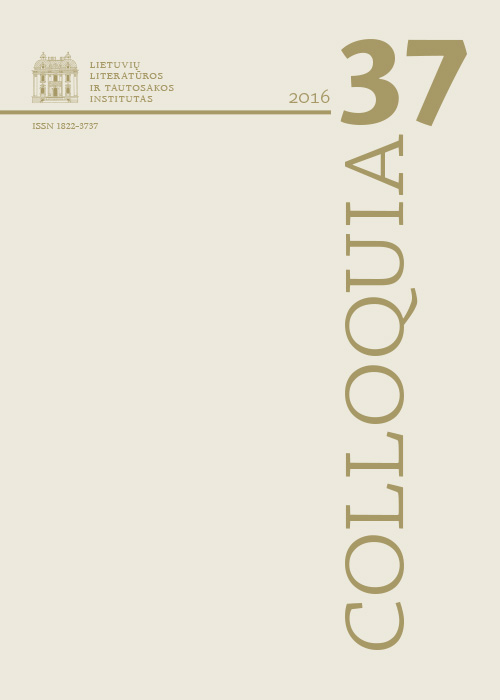Jurijaus Lotmano kultūros semiotikos paradoksas
Santrauka
Straipsnyje aptariama pastarųjų dešimtmečių Jurijaus Lotmano kultūros semiotikos recepcija ir pats kultūros semiotikos projektas. Lotmano recepcijai Lietuvoje būdingos specifinės tendencijos: nors jis itin gausiai cituojamas, tėra vos keli kultūros semiotikos projektą kritiškai reflektuojantys straipsniai. Specifiška ir tai, kad Lotmanas pristatomas visų pirma kaip struktūralistas, besidomintis „antrinėmis modeliuojančiomis sistemomis“. Tuo tarpu kitose akademinėse terpėse didesnis dėmesys tenka vėlyviesiems Lotmano darbams, akcentuojamas kultūros semiotikos artimumas literatūros sociologijai ir antropologijai. Remiantis recepcijos analize trečiojoje straipsnio dalyje grįžtama prie konkrečių Lotmano kultūros semiotikos projekto epicentrą sudarančių sampratų aiškinimo(si). Rekonstruojamos tokios meninio teksto socialinę funkciją, santykį su ideologijomis ir gyvenimu apskritai teoretizuojančios sampratos kaip sąveikos, pasaulio modelis, modeliavimas, aptariamos šių sampratų taikymo perspektyvos.
Atsisiuntimai
Skaitomiausi šio autoriaus(ų) straipsniai
- Aistė Kučinskienė, Jūratė Sprindytė, Virginija Cibarauskė, Jūratė Čerškutė, Rima Bertašavičiūtė, Apie doktorantūros studijas, laisvalaikį ir akademines erdves , Colloquia: T 33 (2014)
- Jurij Lotman, Virginija Cibarauskė, Literatūrinė biografija kultūros istorijos kontekste , Colloquia: T 32 (2014)
